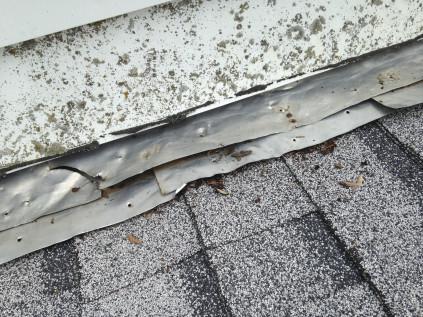The flashing is a crucial component of any roofing system, as it provides a watertight seal and protects vulnerable areas from moisture infiltration. However, there are instances when a roofer may neglect to replace the flashing during a roof replacement or repair project. In this article, we will discuss the consequences of a roofer not replacing flashing and provide insights on how to address this issue effectively.

The Importance of Flashing in Roofing:
Roofing professionals typically use metal or other waterproof materials to construct and install flashing around roof penetrations such as chimneys, vents, skylights, and dormers. It acts as a barrier to prevent water from seeping into the vulnerable areas of the roof. Without proper flashing, water can penetrate the roof, leading to leaks, water damage, and potentially compromising the structural integrity of the entire roofing system.
Consequences of Not Replacing Flashing:
Leaks and Water Damage: The primary consequence of not replacing flashing is the increased risk of leaks and water damage. When the installation or replacement of flashing is not done properly, it can allow water to infiltrate the roof, resulting in moisture intrusion, the growth of mold, and damage to the underlying structure. Over time, these issues can result in costly repairs and jeopardize the integrity of the entire roofing system.
Structural Damage: Water that infiltrates the roof due to inadequate flashing can damage the structural components of the building. Moisture can rot wood, weaken support beams, and compromise the stability of the roof structure. If left unaddressed, this can lead to more extensive and expensive repairs in the future.
Mold and Mildew Growth: Insufficient or damaged flashing can lead to moisture intrusion, promoting mold and mildew growth. These microbial organisms can spread rapidly, compromising indoor air quality and posing health risks to occupants. Addressing the issue of improper flashing installation is crucial as mold remediation can be expensive and time-consuming.
Addressing the Issue:
Inspect the Flashing: If you actively suspect that the flashing was not replaced by the roofer, the first active step is to actively conduct a thorough inspection of the roof. Look for signs of damaged or deteriorated flashing around roof penetrations. Pay attention to any visible gaps, cracks, or signs of water intrusion. It may be necessary to enlist the help of a professional roofer or inspector to ensure a comprehensive evaluation.
Contact the Roofer: If you confirm that the flashing was not replaced as part of the roofing project, contact the roofer who performed the work. Discuss the issue with them, emphasizing the importance of proper flashing installation for the integrity of the roof. In some cases, the roofer may be willing to rectify the situation and replace the flashing at no additional cost.
Consult a Professional Roofer: If the original roofer is unresponsive or unwilling to address the issue, it is advisable to seek the assistance of a professional and reputable roofer. Explain the situation and request an assessment of the existing flashing. A skilled roofer can determine the best action, potentially replacing the flashing for adequate protection against water intrusion.
Take Preventive Measures: To prevent future issues, ensure that any future roofing projects include the replacement or installation of appropriate flashing. When hiring a roofer, request documentation and references to verify their expertise and track record in installing flashing correctly. It is also beneficial to conduct regular roof inspections and maintenance to identify any potential flashing issues early on.
Conclusion:
Flashing is a critical element in a roofing system, and neglecting to replace it can have severe consequences. Leaks, water damage, structural issues, and mold growth are all potential outcomes of inadequate or absent flashing. If you suspect missing flashing during a roofing project, inspect it, contact the roofer, and consult a professional. By acting promptly and ensuring proper flashing installation, you safeguard your roof and avoid expensive future repairs.



Leave a Reply